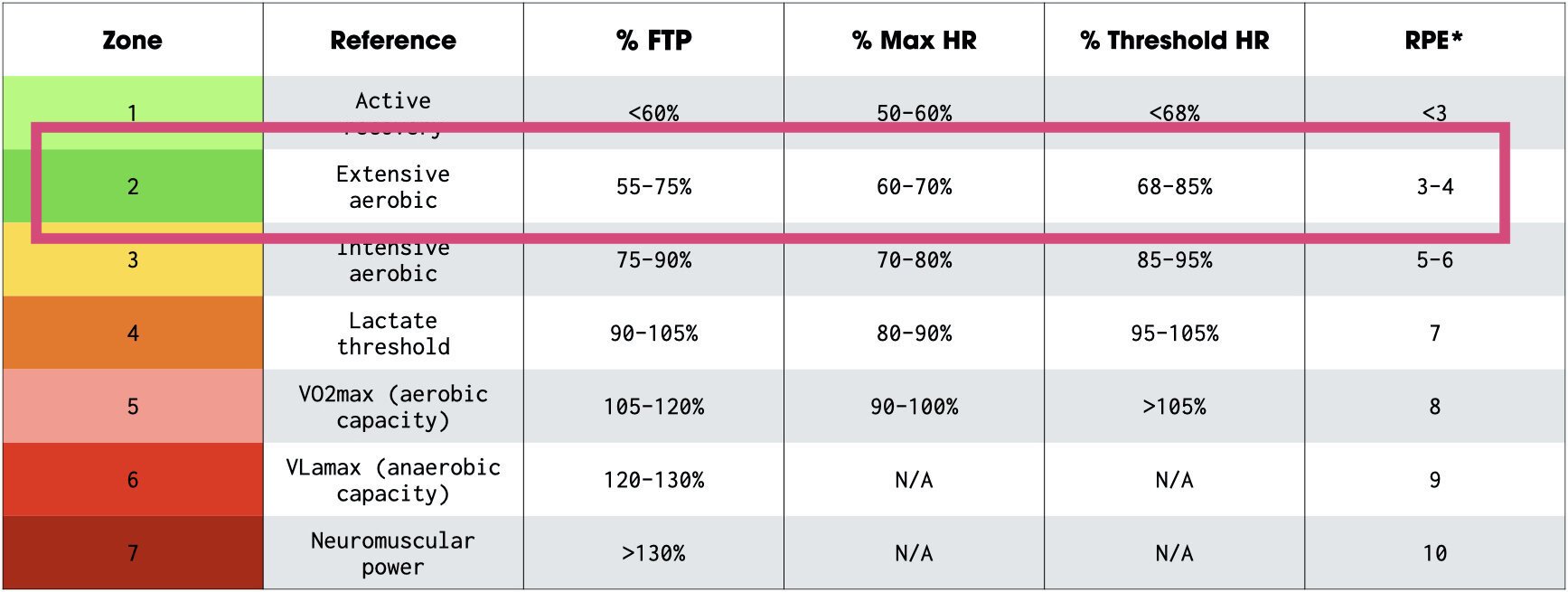|
THE COMPLETE
CARNIVORE DIET GUIDE
Learn how to lose weight, fix your gut and cure autoimmune symptoms with our free Carnivore Diet guide.
|
|
The Carnivore Diet has been gaining popularity in recent years as a way to improve health, increase longevity, and even boost athletic performance. In its strictest form, this dietary approach emphasizes consuming animal-based foods while eliminating all plants from the diet. While it may seem extreme, many people have reported significant improvements in their health and well-being on carnivore. However, following the Carnivore Diet isn't enough for optimal health and longevity. A well-planned training regimen is essential to maximize the benefits of this way of eating. This article explores the ultimate training regimen for those following the Carnivore Diet. We'll cover everything from strength training to cardio and recovery, providing the tools to take your health and fitness to the next level. So, whether you're already following the Carnivore Diet or simply curious about this approach, read on to discover how you can achieve optimal health and longevity with the help of adequate training and recovery. Optimum Training for Longevity and Health An adequate workout and recovery plan is designed to help you achieve optimal health and longevity through strength training, cardio, and recovery. Incorporating these elements into your routine can improve physical fitness, reduce the risk of chronic diseases, and increase lifespan. Training the energy systems humans are designed to operate on metabolically is essential for promoting optimal health and longevity. Dr. Peter Attia has popularized the concept of zone 2 and zone 5 training, which correspond to the aerobic and anaerobic energy systems, respectively. Zone 2 training involves low to moderate-intensity exercise, which primarily relies on fat as a fuel source and improves cardiovascular health. Zone 5 training, on the other hand, involves high-intensity exercise, which mainly relies on carbohydrates as a fuel source and improves muscle strength and power. By incorporating zone 2 and 5 training into your exercise routine, you can optimize your metabolism, improve your fitness level, and reduce the risk of chronic diseases like heart disease and diabetes. By training the energy systems we are designed to operate on metabolically, people can promote long-term health and improve their quality of life. Strength training is one of the most critical components of exercising for longevity. It is essential for building and maintaining muscle mass and overall health and longevity. Muscle mass predicts lifespan and can also improve insulin sensitivity and bone density. Finally, rest and recovery are crucial to staying healthy and fit throughout aging. Without proper rest and recovery, the body can become fatigued and overworked, leading to injury and burnout. Adequate rest and recovery can also improve performance and prevent chronic diseases. The Importance of Zone 2 Training for Longevity Zone 2 training is an essential component of any endurance training program. It involves maintaining a moderate level of exertion, which is below the anaerobic threshold. The benefits of Zone 2 training are numerous, and its impact on one's overall health and longevity is significant. When performed regularly, this training can improve cardiovascular function, enhance endurance, and increase energy levels. Additionally, Zone 2 training has been shown to reduce stress levels and improve mental health, making it an effective tool for managing anxiety and depression. Moreover, Zone 2 training can help to prevent chronic diseases such as obesity, heart disease, metabolic disease, and diabetes. It does so by reducing inflammation in the body, which is a significant contributor to the development of these conditions. Furthermore, staying within Zone 2 for extended periods increases the body's ability to burn fat as fuel, which can help to maintain healthy body weight and composition. In conclusion, Zone 2 training is a crucial aspect of any fitness routine for athletes and anyone looking to improve their overall health and longevity. By improving cardiovascular function and endurance, reducing inflammation, and burning fat as fuel, Zone 2 training can help to prevent and manage chronic diseases, improve mental health, and increase overall energy levels and vitality. Examples of Exercising in Zone 2 While Zone 2 training refers to the heart rate zone of each individual, you can incorporate it into your exercise routine in several ways. Choose the one you enjoy because you'll need to stay in that zone for at least 40 minutes each time, and ideally, you'd like to hit 60 minutes without a break to enjoy the benefits.
It's important to note that the specific heart rate range for Zone 2 varies for each individual, depending on various factors such as age, fitness level, and overall health. If you need help figuring out yours, contact a qualified coach or healthcare professional to help you determine your optimal Zone 2 heart rate range for safe and effective training. The Importance of Zone 5 Training for Longevity While Zone 2 training is often considered the foundation of endurance training, Zone 5 training is equally vital for longevity and overall health. Zone 5 training is characterized by high-intensity intervals that push the body to its maximum heart rate. This type of training is essential for building speed, power, and anaerobic endurance, which are critical for performance in high-intensity activities, such as sprinting, interval training, and high-intensity sports. But beyond performance gains, Zone 5 training can also provide significant benefits for longevity and overall health. Studies have shown that high-intensity interval training (HIIT) can improve cardiovascular health by increasing the body's ability to utilize oxygen and reduce blood pressure. HIIT has also been shown to improve insulin sensitivity, which can help to prevent type 2 diabetes. Furthermore, high-intensity training can stimulate the production of human growth hormone (HGH), which plays a critical role in muscle growth, fat metabolism, and bone density. As we age, our bodies produce less HGH, which can contribute to muscle loss, bone fragility, and metabolic disorders. Regularly engaging in Zone 5 training can help counteract these effects and maintain healthy levels of HGH production. In summary, Zone 5 training is crucial to any endurance training program for performance gains, longevity, and overall health. By pushing the body to its maximum heart rate and stimulating the production of HGH, high-intensity training can improve cardiovascular health, prevent metabolic disorders, and maintain healthy muscle and bone density. Examples of Zone 5 Training It's important to note that Zone 5 training should be approached with caution and under the guidance of a qualified coach or healthcare professional to prevent injury or overexertion. However, if you've got experience in training at a high intensity, here are a few examples to give you an idea.
Remember, Zone 5 training should be done sparingly and with caution, as it is very demanding on the body. Listen to your body, stay hydrated, rest adequately, and recover between workouts. Importance of Strength Training for Optimal Health and Longevity Strength training is an essential component of overall health and longevity. As we age, our muscles naturally begin to lose mass and strength. This process, known as sarcopenia, can lead to a loss of mobility, stability, and independence. However, regular strength training can help slow and even reverse this process, allowing us to stay strong and healthy well into our golden years. Here are some of the critical benefits of strength training for longevity: Increased muscle mass and strength: Strength training stimulates muscle growth and promotes the development of stronger, more resilient muscles. This can help improve balance, stability, and overall mobility, making it easier to perform daily activities and maintain an active lifestyle. Improved bone health: Resistance training has increased bone density, reducing the risk of fractures and osteoporosis. This is especially important for women, who are at a higher risk of developing osteoporosis after menopause. Reduced risk of chronic disease: Regular strength training has been linked to a lower risk of chronic conditions such as heart disease, type 2 diabetes, and cancer. This may be partly because strength training helps maintain a healthy weight and improve insulin sensitivity. Improved cognitive function: Strength training has been shown to improve cognitive function and protect against age-related cognitive decline. This is thought to be due to increased blood flow to the brain and the release of hormones such as growth hormone and testosterone. Increased longevity: Studies have shown that regular strength training can increase lifespan and reduce the risk of premature death. This may be partly due to the reduced risk of chronic disease and improved overall health and function. In conclusion, strength training is crucial to a healthy and long life. By keeping our muscles strong and resilient, we can enjoy improved mobility, balance, and overall health well into our golden years. Incorporating strength training into your weekly routine can make a big difference in your health and quality of life over the long term. Exercise Examples for Strength Training A well-designed strength training plan can improve muscle strength, bone density, joint health, balance, and overall quality of life. When creating a strength training plan for longevity, it is essential to include exercises targeting major muscle groups while focusing on joint mobility and stability.
Incorporating these exercises into a strength training plan can improve your overall strength, mobility, and quality of life. It is essential to consult with a professional trainer or physician before starting a new exercise program, especially for those with underlying medical conditions or injuries. The Role of Rest and Recovery for Longevity Rest and recovery are crucial components of any strength training plan for longevity. After a workout, the body needs time to repair and rebuild muscle fibers, so giving your muscles time to rest between training sessions is essential. Adequate rest and recovery also help prevent injury and reduce the risk of overtraining. A lack of rest can lead to fatigue, decreased motivation, and reduced performance. Incorporating rest days and recovery methods such as stretching, foam rolling, and massage can help accelerate recovery, allowing you to reach your fitness goals and maintain a healthy lifestyle over the long term. Example Training Plan for Longevity Peter Attia is a medical doctor and longevity expert who emphasizes the importance of strength training and exercise for overall health and longevity. He recommends a well-rounded training program incorporating strength, Zone 2 and 5 training, and stability work. According to Attia, a typical week of training for longevity may look something like this: Peter Attia emphasizes the importance of gradually increasing intensity, volume, and difficulty while allowing for adequate rest and recovery. He also stresses the importance of a healthy diet and lifestyle habits that support overall health and longevity. By following a well-designed training program and making healthy lifestyle choices, you can maintain your physical function, independence, and overall quality of life as you age. In an upcoming article, we'll discuss practices in your nutrition to match a longevity training plan.
1 Comment
Mark Allison
7/25/2023 07:47:43 am
Interesting how this contradicts in some areas the recommendations from Dr Doug McGuff in Body by Science. I would be interested in your opinions on this.
Reply
Leave a Reply. |
Carnivore Diet Recipes & Meal PlansOur Trusted Partners
Popular Guides
|











